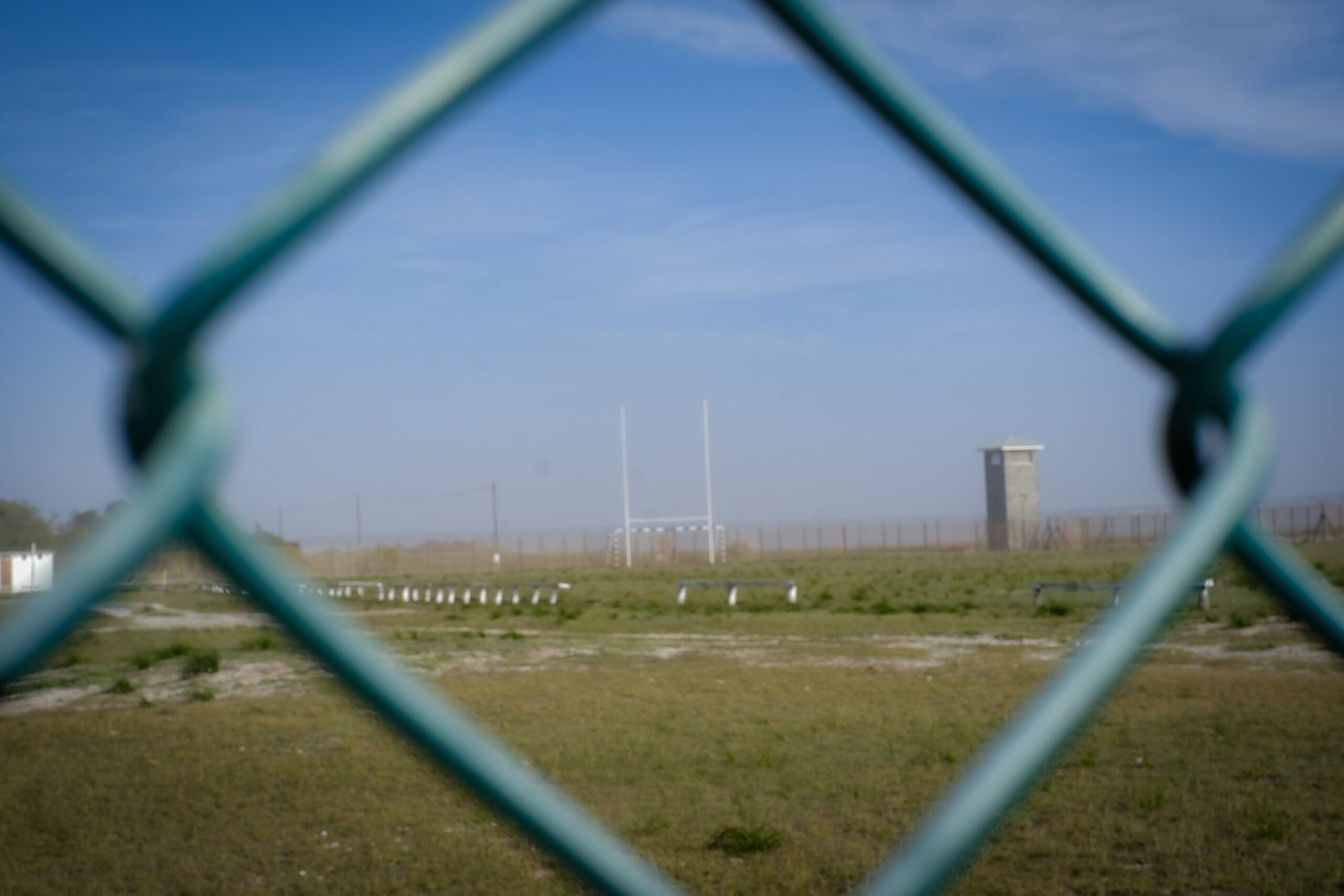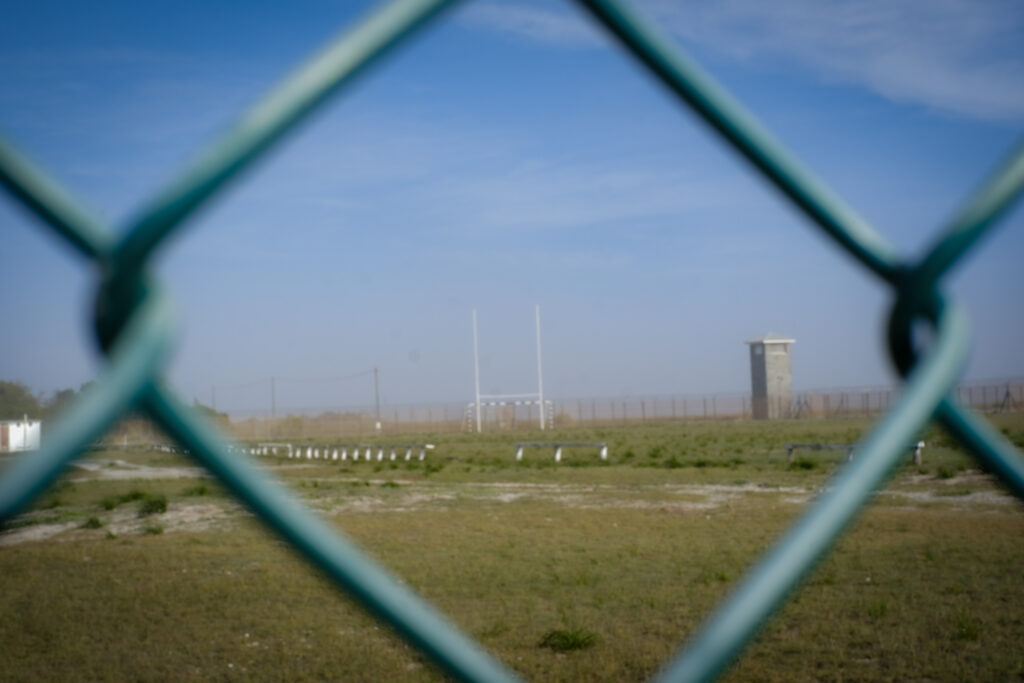
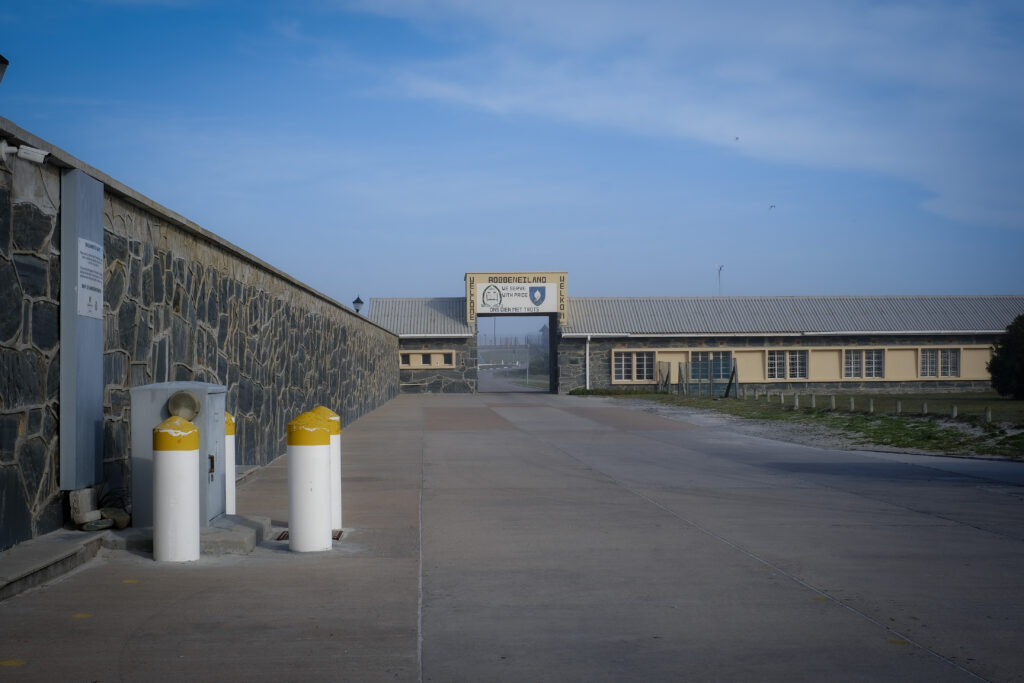
Eerie. Empty. Quiet.
These words barely capture the almost haunting atmosphere of Robben Island. On May 16, 2024, our group embarked from the Robben Island ferry stop. The ride to this infamous “prison island” was tumultuous, with rough waves and a boat that seemed a bit too close to the ocean. As some of us took nausea medication to combat the rolling body of water and boat’s pungent smell, we found ourselves sitting near a group of school children on a fiel trip to the historic island.
As we approached the island, the boat filled with the children’s rehearsed songs, their voices carrying hoy and pride contrasted sharply with the journey’s discomfort. Each song concluded with a round of applause, their laughter, and enthusiasm providing a welcome distraction from our queasy experience and the boat’s relentless motion.
Upon finally arriving at Robben Island, many of us felt significant relief. Stepping off the boat, none of us would have anticipated the profound impact that the island would have on our perceptions of apartheid, the racial caste system in South Africa, and the essence of collective joy and resistance.
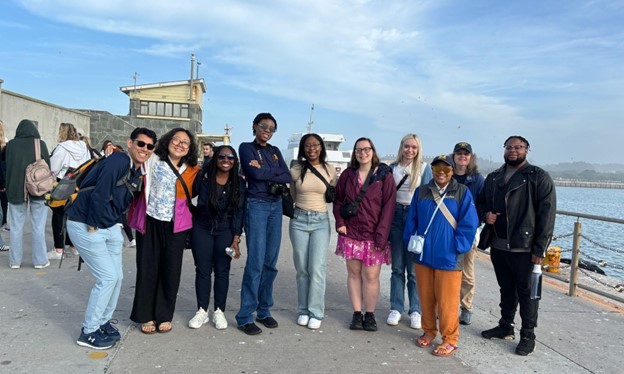
Our first encounter on the island was being ushered onto a bus, joining other tourists seeking to learn about the significance of the historic island. Our guide, Jana (pictured below), a former prisoner of Robben Island, introduced himself and his role: to guide is through the prison using his lived experiences as a lens and to reveal the realities of the island.
The tour began at one of the prison blocks. The seemingly brutalist architecture struck me immediately — the pristine white walls juxtaposed with the barbed wire, a stark reminder of the carcerality of the site. Inside, the cramped quarters where prisoners lived were impactful. They had no hot water, shared bunk beds inches apart (see image below), and were segregated by race and nationality, even their diets reflected these forced divisions. Political leaders and freedom fighters were stripped of their autonomy, subjected to hard labor under the blistering sun, minimal breaks, isolation, dietary restrictions, and corporal punishment at the discretion of prison officers who acted as “judge, jury, and executioner” (Jana, personal communication, May 16, 2024). The objective of imprisonment was clear: to break their spirits and inhibit their fight towards equality.
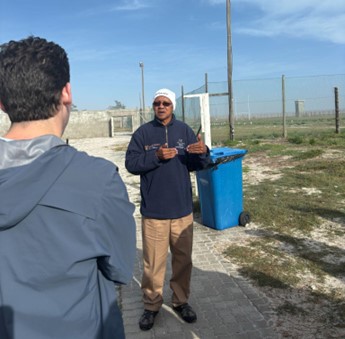
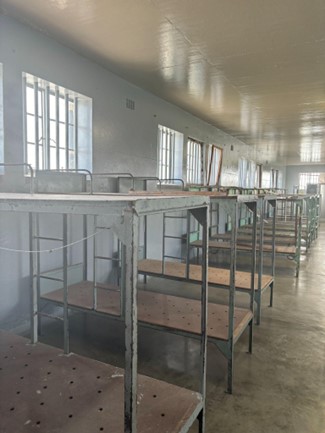
Jana’s retelling of his time in Robben Island helped to peel back the nuanced layers of the grim reality of the prison. Despite the harsh inhumane conditions, there was joy and solidarity among the prisoners. As the prison began to revise its inhumane policies for safety reasons, the space transformed. The reduction in the extreme conditions resulted in a vibrant community for group activities such as games and sports as well as critical discourse and discussions of democracy. Prisoners taught each other each other the principles of democracy, debated political ideologies, and radically reimagined a future centered around freedom. Through this discourse, Robben Island became a site for lifelong learning and enhanced alignment with efforts towards liberation.

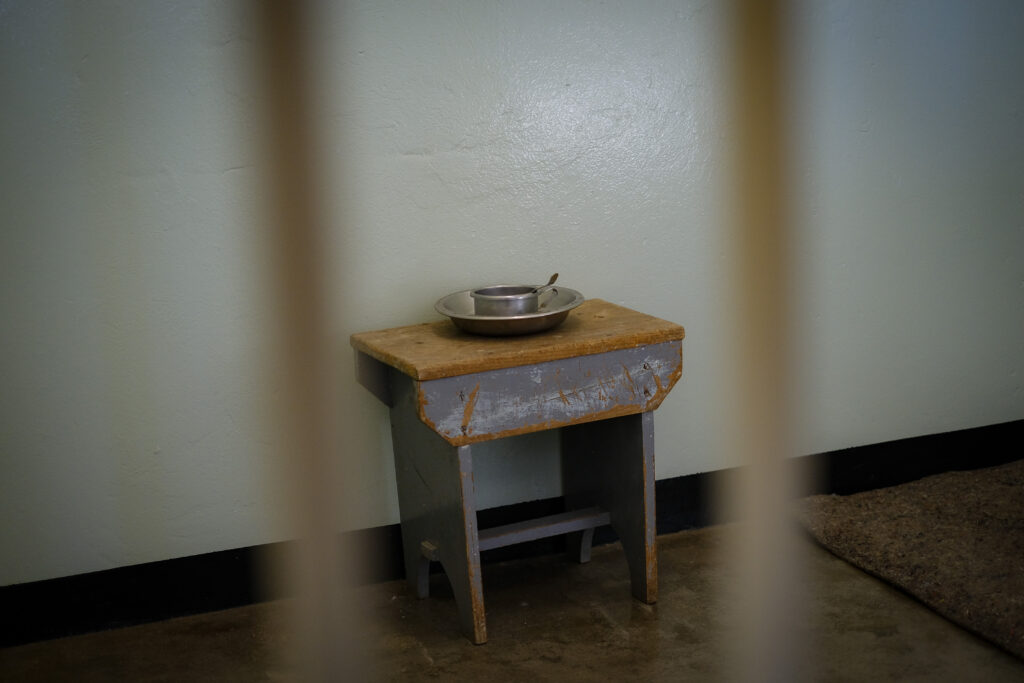
A focal point of the tour was the story of Nelson Mandela, who spent 27 years in prison, 18 of them on Robben Island. In the gardens right outside of prison block, Mandela wrote of freedom in manuscripts that he hid in the soil — a symbolic act of sowing seeds of liberation. His letters, smuggled out of the prison, reached other freedom fighters and fueled the ongoing struggle for emancipation. We also visited his cell, which prompted a sobering response. The cell which was no larger than a small bathroom (pictured below) provided context for the conditions that Mandela had to endure. Despite these conditions, he remained committed to ending apartheid in South Africa.
The tour concluded with an exploration of the island’s broader history, guided by our bus guide, Toya, and bus driver, Claude. The two illuminated the island’s past, from its origins as a home to Indigenous peoples to its colonization under the Dutch, who exploited its resources and eventually turned it into a site of war, a medical facility, and a leper colony. The last political prisoners left in 1996, a year later, Robben Island transformed into a museum. The museum seeks to preserve the memory of those who endured in its confines and contributed to the crumbling of apartheid.
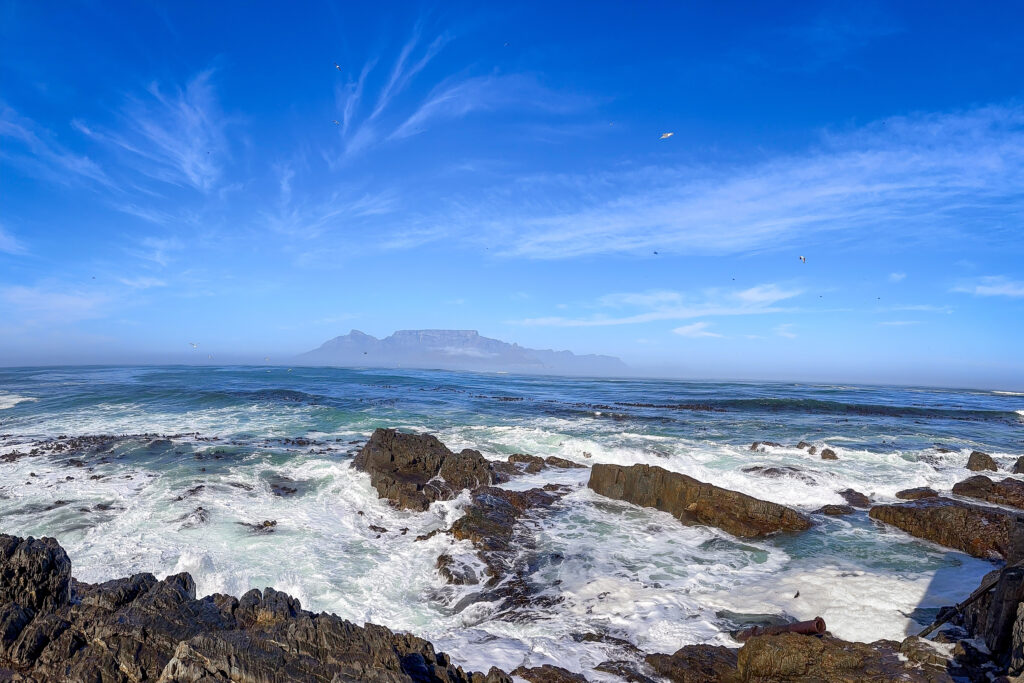
As we ferried back, a newfound awareness settled over us. The island’s purpose of shattering the spirits of the inhabitants had been subverted by the resilience of the prisoner’s devotion to liberation, turning a place of punishment into a beacon of hope and fortitude. The South African government has used the island’s isolation and harsh conditions to break their resolve, but it simply strengthened their commitment to the cause. The story of Robben Island and the prisoners who survived its conditions, finding joy and fostering community, provided me with renewed optimism regarding the fight for equality.
Eerie. Empty. Quiet. And yet, so profoundly alive with the echoes of tenacity and the unyielding pursuit of liberation.
–by Brandy Jones, CSHPE doctoral student

